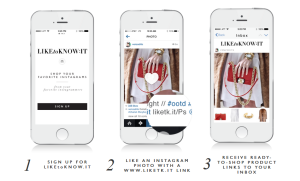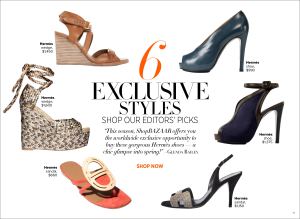Fashion Magazines Fail to Hit the Mark with Shoppable Content
Print title publishing is an industry in decline, e-commerce is booming, and e-commerce brands are moving into media, yet fashion magazines are failing to turn the desire to purchase they stimulate into actual sales via shoppable content.
You hear a track you like, anywhere, at any time, and you can Shazam-it and purchase it within 20 seconds. But, see a jumper or coat in the pages of a fashion magazine, and the same cannot be said.
Fashion magazines – whether glossy and high end or throw-away and high-street – by nature generate a desire to purchase. They are our arbitrators of taste and style. And they exist solely thanks to advertisers who trust in their ability to reach a target shopping-demographic. But so far, fashion magazines have failed to turn this influential position and the desire to purchase they stimulate into actual sales.
Why does it matter? They are in publishing not retail? There are a few key reasons why it should.
Print magazine publishing is an industry in decline
In 2011, 152 magazines shut down; in 2012 another 82 followed. In the first half of 2014, sales of US consumer magazines dropped 12% compared with a year before, and the majority of the largest 25 consumer magazines continue to post circulation declines. At the same time, digital editions are expanding their presence in the publishing industry and traditional advertising revenue is tapping off.
Fashion retailing is booming online and mobile
Online and mobile fashion retailing is booming. There is a continual stream of amazing e-commerce sites launching – making online shopping easier, faster, more personalised, and more beautifully designed – every day. And e-commerce sites such as Net-a-Porter and ASOS (the world’s most visited fashion web site with 30 million unique monthly visitors and 8 million active customers across 200 countries) are dominating global demand.
Shoppers are choosing the convenience of click-to-buy, the choice, and low prices.
E-Commerce giants are successfully moving into print magazine publishing industry
 These e-commerce giants are also moving into print magazine publishing with astonishing success. The ASOS magazine has a circulation of 450,000, and regularly features celebrities such as Taylor Swift, Lily Collins, or Rita Ora. Net-a-Porter has launched a paid-for title on UK newsstands, Porter, and Gisele, Cate Blanchet, Lady Gaga, and Lara Stone have all graced its Vogue-worthy covers.
These e-commerce giants are also moving into print magazine publishing with astonishing success. The ASOS magazine has a circulation of 450,000, and regularly features celebrities such as Taylor Swift, Lily Collins, or Rita Ora. Net-a-Porter has launched a paid-for title on UK newsstands, Porter, and Gisele, Cate Blanchet, Lady Gaga, and Lara Stone have all graced its Vogue-worthy covers.
Both companies also boast websites that are fabulous examples of fashion media, along with offering successful mobile apps and content emails.
74% of women want to find and buy the items they have seen in a magazine or on an app
74% of women want to find and buy the items they have seen in a magazine or on an app. So why not start to make it easier?
Several top titles have been experimenting with e-commerce, but they have largely struggled to truly integrate it into their content offering, and have therefore failed to turn these experiments into major revenue streams and transform the market.
American Vogue LiketoKnowit
 American Vogue has a shoppable Instagram feed, LiketoKnowIt, developed in partnership with sales platform RewardStyle. But the site is not easy on the user; the would-be shopper must first sign up, then “Like” photos of the items they want, before receiving an email with product links they must follow in order to actually complete a transaction.
American Vogue has a shoppable Instagram feed, LiketoKnowIt, developed in partnership with sales platform RewardStyle. But the site is not easy on the user; the would-be shopper must first sign up, then “Like” photos of the items they want, before receiving an email with product links they must follow in order to actually complete a transaction.
Vogue clearly recognises the opportunity to monetise its content, but the system lacks the necessary instant gratification: the path from purchase intent to transaction completion needs to be frictionless and short.
Harper’s Bazaar ShopBazaar
 Harper’s Bazaar has a shoppable element with its standalone web-shop, ShopBazaar, which, connected to the tablet edition of the magazine, provides clickable links. But ShopBazaar is not integrated seamlessly into the existing Harper’s Bazaar core editorial content, and is instead an e-commerce site attached to the Harper’s Bazaar name.
Harper’s Bazaar has a shoppable element with its standalone web-shop, ShopBazaar, which, connected to the tablet edition of the magazine, provides clickable links. But ShopBazaar is not integrated seamlessly into the existing Harper’s Bazaar core editorial content, and is instead an e-commerce site attached to the Harper’s Bazaar name.
It has been suggested that this reflects the magazine’s desire to maintain its editorial integrity. However, considering magazines already ‘push’ their advertisers’ products, the integrity of magazines is already a fine line.
Cosmopolitan Shop this Ad
Cosmopolitan is responsible for the best effort so far (perhaps fortunately, seeing as the 3rd most popular women’s title in the US saw a decline of 25% in sales last year). Teaming up with shopping-experience company Shop Advisor, elements of the US iPad edition allow readers to “Shop this Ad” or “Shop this Page”. Clicking a branded button links readers to online retailers for immediate purchase. Would-be shoppers can also get price alerts and use a save function for later purchase.
But whilst it’s a start, clicking through shoppable-links does not ensure stock availability, and instead simply directs users away from the magazine towards a retailers own website.
Retail and media converge
The magazine who transforms this market will instead need to integrate e-commerce in a compelling, seamless, and intuitive way: no emails, no separate web-shops, no redirects, and no links to sold-out products or products not available in the right size.
And as companies such as ASOS and Net-a-Porter show retail and media are starting to converge, might this be another occasion where tech-centric, online companies force out the old guard who have been unable to change with the times?
















There are no comments
Add yours